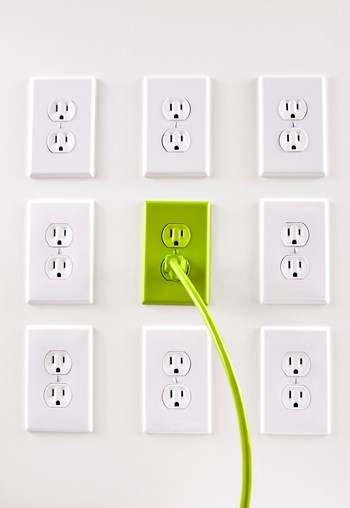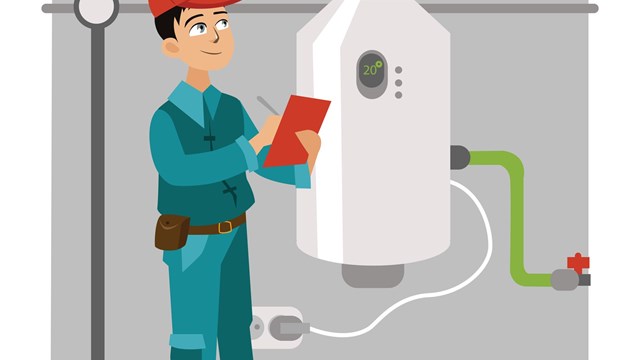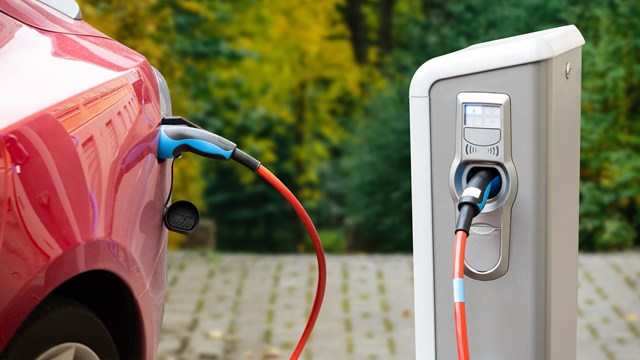
Of all the issues facing association boards and managers as the cold weather months approach, energy and fuel costs clearly top the list. On the one hand, residents must obviously be kept comfortable and safe. On the other, fuel oil has topped $70 a barrel, and with winter coming, that makes for some uneasy budget-watching.
There are several ways to lower your energy costs—closely analyzing your association's utility bills and researching other billing or delivery options, for example—but a very good place to start is by getting an energy audit.
"Just like an audit of your taxes, [an energy audit] is a careful look at your areas of energy usage," says I.G. "Zack" Lilienfeld of Integrity Engineering in Margate. "From the information you get from the audit, you can ultimately determine the better ways you can use energy."
Consumer, Audit Thyself
If you're a very small building, or an individual homeowner who wants to assess his or her own energy consumption, there are some basic do-it-yourself measures you can take in lieu of calling in a professional energy auditor. According to Michael Winka, a director in the Office of Clean Energy (OCE) for the New Jersey Board of Public Utilities (NJ-BPU), some associations can sometimes do the job themselves.
"The NJ-BPU has a web-based audit system (accessible at www.njliving.com) where individuals can go [to do a basic self-audit]. It asks you all the necessary questions about your property: how many windows there are, where the walls are, the size of the walls, et cetera," says Winka. "It can at least get you started with suggestions and recommendations on what to do for energy savings."
According to Bob Gallo, director of sales and new business development for the New Jersey Natural Gas Company in Wall, once the consumer is logged onto the NJ-BPU's website, the program will ask for an electric account number and a natural gas account number. Those numbers are then used to generate a customized energy profile to identify areas where consumption could be curbed and money saved.
"At the end of the report, it'll share with you not only how you scored, but how you compare to your neighbors in similar building types in that region," Gallo says. "It provides hands-on, customized answers, and there's no cost."
Self Awareness
One place you can look for energy saving—and thus money-saving—opportunities on your own are the parts of your building where energy is used 24 hours a day. Stairwell, hallway, and machine room lighting are just a few examples of where relatively inexpensive energy-efficient bulbs can be used to curb energy usage and save money.
"When you replace a 60-watt incandescent with a 15-watt compact florescent bulb, it gives you the same light output using a quarter of the energy," says Phil DiBetta, account executive for AM Conservation Group in Hackettstown.
DiBetta says that florescent lighting has come a long way from the buzzing, flickering, greenish glare of yesterday. In the last 20 years, compact florescents have been retooled for residential applications. They come in all shapes and sizes, throw a more attractive glow, and are great for saving energy.
There are other places you can save juice, too. "Look at the systems that your building has," says Fred Ornstein, program manager for Con Ed Solutions in New York City. "In the incinerator room for example, [the lights] could be door-controlled or occupancy-controlled so that they only come on when someone is in there. This reduces the use of electricity, but still serves the need."
Replacing old light bulbs with newer, more efficient models and using online profiling software only go so far, however. According to Winka, "[Performing an audit yourself] depends on your level of technical skill. If you don't have a whole lot, then it makes sense to use an energy auditor."
Send in the Pros
Energy auditors are often engineers with specialized training. They come in and show your board, management, and staff how to identify areas of inefficiency and cut energy waste. Aside from identifying physical aspects of your building or development's energy profile, an energy auditor will also look at the less tangible things—like your monthly energy bills, for example.
As part of your audit, every component of every utility bill will be carefully scrutinized for accuracy. Not only does a close reading like this uncover and eliminate hidden overcharges, but your auditor can also compare current costs against alternative rate structures based on your HOA's equipment and load profile. That can help you take advantage of any available billing reduction opportunities. Simply assuming that your bills are accurate and that the utility companies are charging the lowest rates available can be a costly mistake.
"The public service commission's position is that the customer is responsible for choosing the lowest available rate," says Michael Lockhart of American Telephone & Utility Consultants, Inc., a company that does energy audits in New York and New Jersey. "Unless it can be demonstrated that the utility company was at fault, the customer is not entitled to a refund for the prior months' bills. So the sooner an audit is performed to identify alternative rate structures, the better."
Interpreting the Data
The amount of money associations save after doing an energy audit and incorporating the suggested measures varies. The final figure depends on each utility (gas, electric, steam, water), each utility company, a client's heating and cooling equipment and load profile, and metering arrangement, but the pros say that most buildings wind up saving between four and 16 percent on their energy bills after having an audit performed.
Frank Maris, a sales manager for the utility refund specialist UtiliSave LLC in New Rochelle, New York believes that every building and association should have an audit—and says that the results will more than likely be very positive.
"We do an extensive, intensive audit," says Maris. "We download years of data from utility companies. Errors could have come from billings, meter readings, misapplied discounts, non-functioning meters, unapplied credits, power adjustments and taxes," he says. "Things like that can all be done incorrectly, and we make sure they are found and corrected."
"I always tell building managers to hire a reputable utility cost consultant, because I strongly believe that everyone should have a consultant continually reviewing all of their accounts," Lockhart says. "Many managers believe they have it under control and don't need outside help because their accounts payable person or director of engineering has a few success stories about finding billing errors. But since we work on a contingency basis, they have nothing to lose by allowing us to review previously paid invoices."
Sometimes it's a mechanical problem that's at fault for a sky-high energy bill. "We have obtained billing reductions as high as 90 percent," Lockhart says. "In that case, the gas meter was registered 10 times too high due to an incorrect gas instrument drive."
Sometimes, residents themselves can make a tiny adjustment thant's enough to really impact the bottom line, says Lilienfeld. He estimates that homeowners can save 40 percent of their energy costs by making small adjustments to their thermostat.
"This past summer, I did a consultation for homeowners who wanted to cut their energy bills. They had their central air conditioning set to 72, and the first thing I suggested was that they raise it to 80. It's still going to do a fine job—when you come inside, you're going to feel nice and cool—but the cost difference between 72 and 80 on the thermostat is phenomenal."
Making Use of the Information
Once an energy audit is conducted, the findings are presented to the board members or management company in writing. Audit companies are usually more than happy to schedule an in-person meeting to help explain their findings.
"We give the client report of our findings, we show them all the errors and a detailed report of what we propose to do to help save them money," Maris says. "If we find any savings available, we advise them of those rates."
"The best way to do it is for the building to have a contact who is intimately involved in the process," says Ornstein. "The report is delivered to that contact, reviewed with that contact, and then they schedule a presentation to the board. It's very important that the board gets involved, or [the audit results] will just sit on someone's desk and nothing will be done. There may be some questions to the conclusions and how they were reached."
An energy audit isn't something you do once and then forget about. Most audit companies will continually monitor a client's utility costs and look for ways to save the association money.
Since new rates, discounts, riders, programs, tax laws and other tariff changes are constantly being made, it is important to monitor the various sources for this information at least monthly. If your association only has its energy costs examined every six months, you might have just missed six months of savings—or worse, an incentive program may be closed to new participants, and you will have missed out.
In the long run, remember; you are looking to tune up your building the way you would your car. You need to monitor the operating systems and find out what can be made more efficient.
"I think the most important thing to understand is that the energy landscape has changed over the years," Ornstein says. "The cost of energy is higher—and because it is higher, everyone should take a look at what they can do in their facility to help it become more efficient. Efficient means doing more with less energy, not the opposite."
Anthony Stoeckert is a freelance writer and a frequent contributor to The New Jersey Cooperator. Keith Loria also contributed to this article.






Leave a Comment